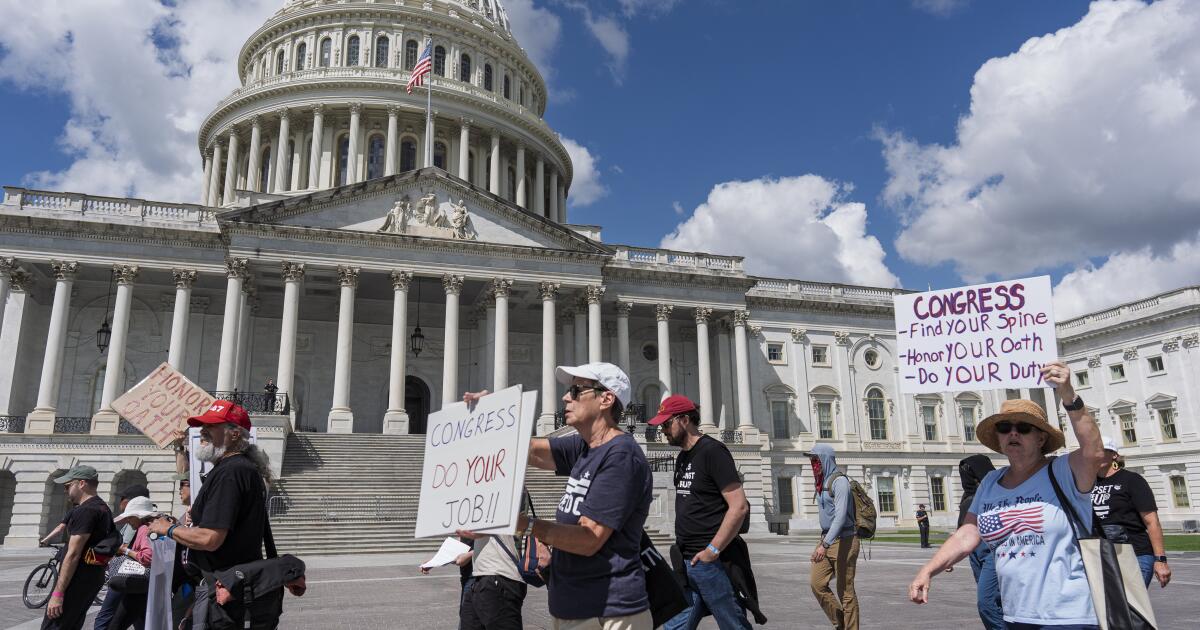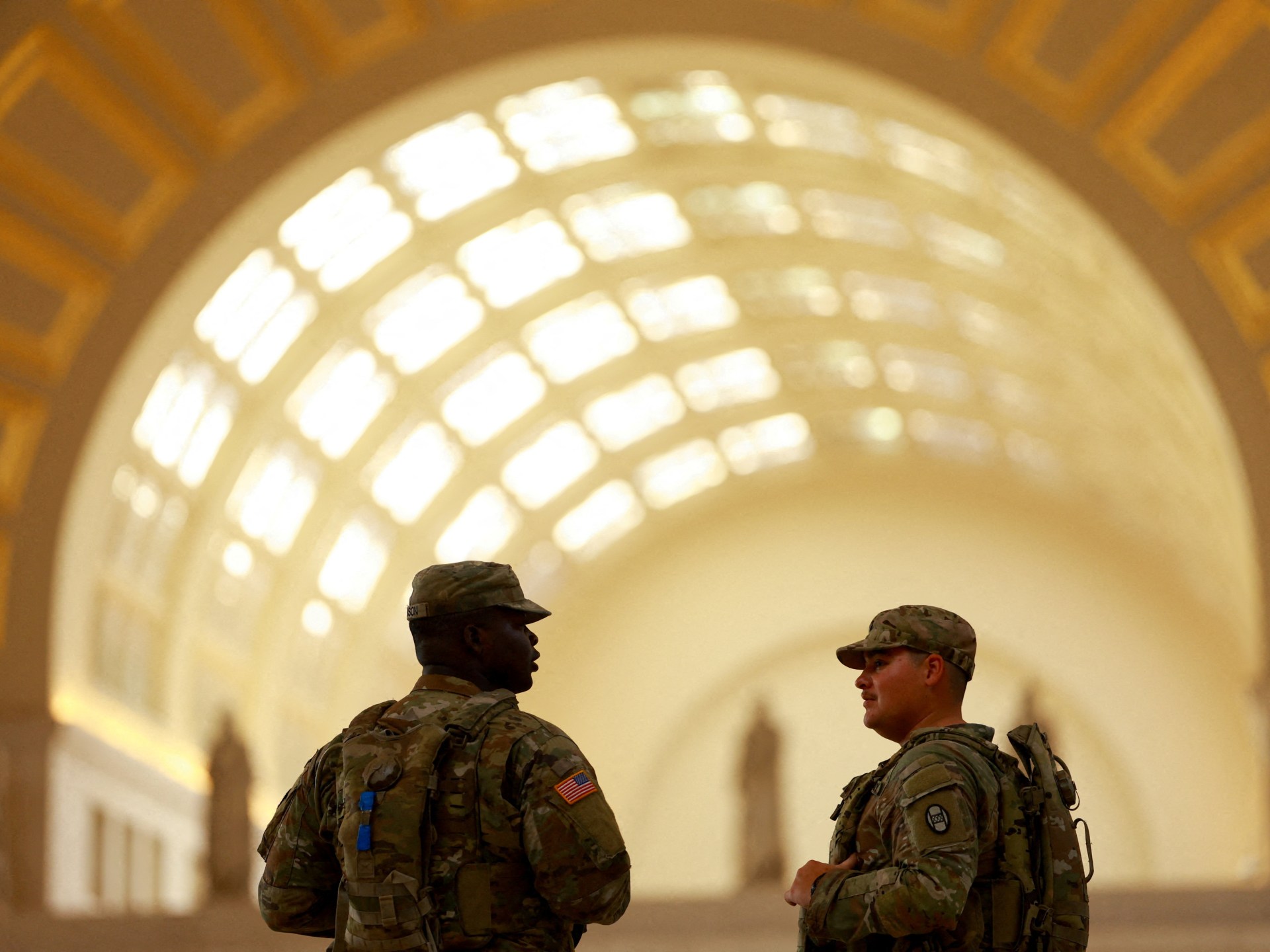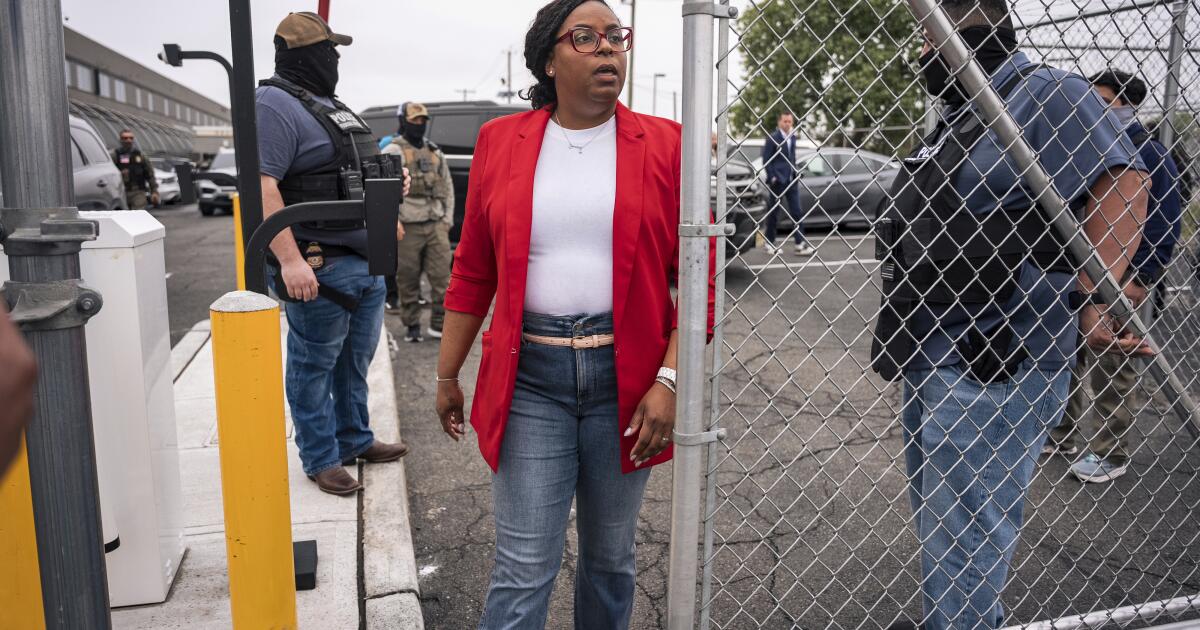House committee releases some Justice Department files in Epstein case
WASHINGTON — The House Oversight Committee on Tuesday publicly posted the files it had received from the Justice Department on the sex trafficking investigations into Jeffrey Epstein and his former girlfriend Ghislaine Maxwell, responding to mounting pressure in Congress to force more disclosure in the case.
Still, the files mostly contain information that was already publicly known or available. The folders — posted on Google Drive — contained hundreds of image files of years-old court filings related to Epstein, who died in a New York jail cell in 2019 as he faced charges for sexually abusing teenage girls, and Maxwell, who is serving a lengthy prison sentence for assisting him.
The files also included video appearing to be body cam footage from police searches as well as recordings and summaries of law enforcement interviews with victims detailing the abuse they said they suffered.
The committee’s release of the files showed how lawmakers are eager to act on the issue as they return to Washington after a monthlong break. They quickly revived a political clash that has flummoxed House Republican leadership and roiled President Trump’s administration.
House Republican Speaker Mike Johnson is trying to quell an effort by Democrats and some Republicans to force a vote on a bill that would require the Justice Department to release all the information in the so-called Epstein files, with the exception of the victims’ personal information.
What’s in the released files
If the purpose of the release was to provide answers to a public still curious over the long concluded cases, the raw mechanics of the clunky rollout made that a challenge.
The committee at 6 p.m. released thousands of pages and videos via the cumbersome Google Drive, leaving it to readers and viewers to decipher new and interesting tidbits on their own.
The files released Tuesday included audio of an Epstein employee describing to a law enforcement official how “there were a lot of girls that were very, very young” visiting the home but couldn’t say for sure if they were minors.
Over the course of Epstein’s visits to the home, the man said, more than a dozen girls might visit, and he was charged with cleaning the room where Epstein had massages, twice daily.
Some pages were almost entirely redacted. Other documents related to Epstein’s Florida prosecution that led to a plea deal that has long been criticized as too lenient, including emails between the defense and prosecutors over the conditions of his probation after his conviction. Barbara Burns, a Palm Beach County prosecutor, expressed frustration as the defense pushed for fewer restrictions on their client: “I don’t know how to convey to him anymore than I already have that his client is a registered sex offender that was fortunate to get the deal of the century.”
Some of the interviews with officers from the Palm Beach Police Department date to 2005, according to timestamps read out by officials at the beginning of the files.
Most, if not all, of the text documents posted Tuesday had already been public. Notably, the probable cause affidavit and other records from the 2005 investigation into Epstein contained a notation indicating that they’d been previously released in a 2017 public records request. An internet search showed those files were posted to the website of the Palm Beach County State Attorney’s Office in July 2017.
Rep. Robert Garcia, the top Democrat on the House Oversight Committee, chided Republicans on the panel for releasing material that he said consisted almost entirely of already available information.
“The 33,000 pages of Epstein documents James Comer has decided to ‘release’ were already mostly public information. To the American people — don’t let this fool you,” Garcia said in a statement.
The disclosure also left open the question of why the Justice Department did not release the material directly to the public instead of operating through Capitol Hill.
Survivors meet with lawmakers
On Capitol Hill onTuesday, the House speaker and a bipartisan group of lawmakers met with survivors of abuse by Epstein and Maxwell.
“The objective here is not just to uncover, investigate the Epstein evils, but also to ensure that this never happens again and ultimately to find out why justice has been delayed for these ladies for so very long,” said Johnson, R-La., after he emerged from a two-hour meeting with six of the survivors.
“It is inexcusable. And it will stop now because the Congress is dialed in on this,” he added.
But there are still intense disagreements on how lawmakers should proceed. Johnson is pressing for the inquiry to be handled by the House Oversight Committee and supporting the committee as it releases its findings.
Push for disclosure continues
Meanwhile, Democrats and some Republicans were still trying to maneuver around Johnson’s control of the House floor to hold a vote on their bill to require the Justice Department to publicly release files. Democrats lined up in the House chamber Tuesday evening to sign a petition from Rep. Thomas Massie, a Kentucky Republican, to force a vote. Three other Republicans also supported the maneuver, but Massie would need two more GOP lawmakers and every Democrat to be successful.
If Massie, who is pressing for the bill alongside Rep. Ro Khanna (D-Calif.), is able to force a vote — which could take weeks — the legislation would still need to pass the Senate and be signed into law by Trump.
The clash suggests little has changed in Congress since late July, when Johnson sent lawmakers home early in hopes of cooling the political battle over the Epstein case. Members of both parties remain dissatisfied and are demanding more details on the years-old investigation into Epstein, the wealthy and well-connected financier whose 2019 death has sparked wide-ranging conspiracy theories and speculation.
“We continue to bring the pressure. We’re not going to stop until we get justice for all of the survivors and the victims,” Garcia told reporters.
Groves writes for the Associated Press. AP writers Eric Tucker, Kevin Freking and Alanna Durkin Richer in Washington, Mike Sisak in New York and Meg Kinnard in Chapin, S.C., contributed.


